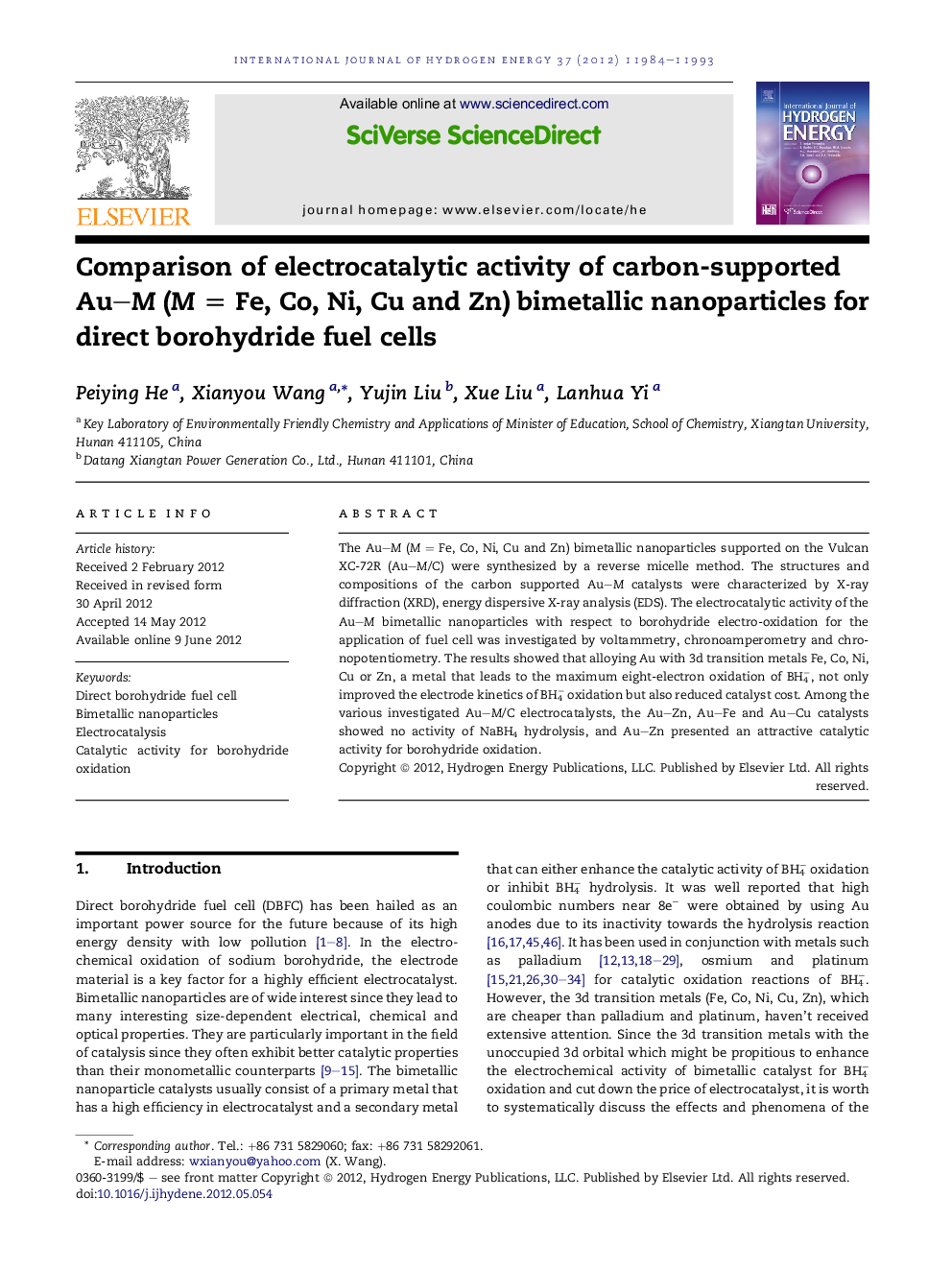| Article ID | Journal | Published Year | Pages | File Type |
|---|---|---|---|---|
| 1275069 | International Journal of Hydrogen Energy | 2012 | 10 Pages |
The Au–M (M = Fe, Co, Ni, Cu and Zn) bimetallic nanoparticles supported on the Vulcan XC-72R (Au–M/C) were synthesized by a reverse micelle method. The structures and compositions of the carbon supported Au–M catalysts were characterized by X-ray diffraction (XRD), energy dispersive X-ray analysis (EDS). The electrocatalytic activity of the Au–M bimetallic nanoparticles with respect to borohydride electro-oxidation for the application of fuel cell was investigated by voltammetry, chronoamperometry and chronopotentiometry. The results showed that alloying Au with 3d transition metals Fe, Co, Ni, Cu or Zn, a metal that leads to the maximum eight-electron oxidation of BH4−, not only improved the electrode kinetics of BH4− oxidation but also reduced catalyst cost. Among the various investigated Au–M/C electrocatalysts, the Au–Zn, Au–Fe and Au–Cu catalysts showed no activity of NaBH4 hydrolysis, and Au–Zn presented an attractive catalytic activity for borohydride oxidation.
► We prepared Au–M/C (M = Fe, Co, Ni, Cu and Zn) catalysts by reverse micelles method. ► We elucidated the role that Au–M/C plays in enhancement of electrochemical activity. ► We compared electrocatalytic activity for Au–M/C catalysts for borohydride oxidation. ► Au–Zn catalyst presents an attractive catalytic activity among the Au–M/C catalysts.
